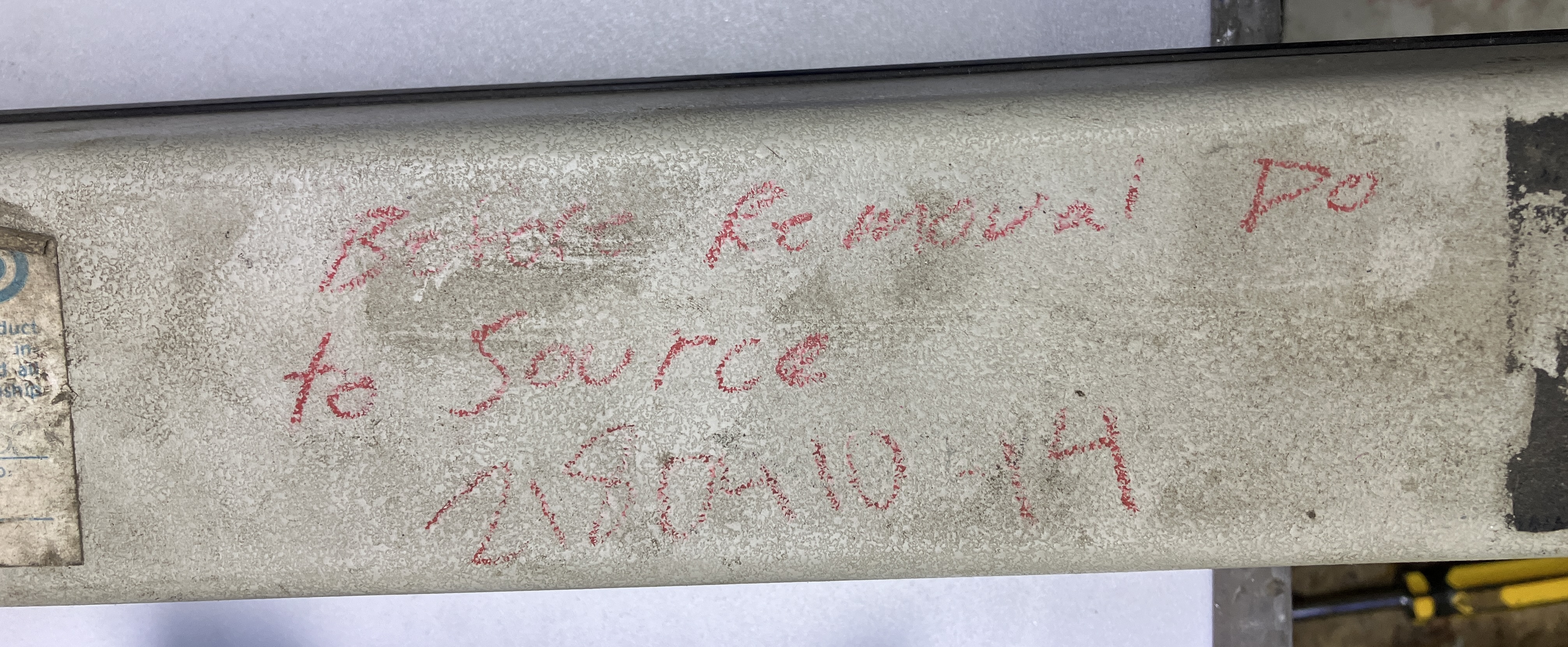The Stabilite 120S manufactured by Spectra-Physics is a true classic and represents the pinnacle of helium neon lasers. It was marketed as both a high-performance and stable helium neon laser for a wide variety of applications. It produces about 5mW of 632.8nm laser light. This unit in particular is quite remarkable as it actually still lases despite being manufactured over 40 years ago (1983), and having essentially no getter compound left inside the plasma tube. It took a few strikes to start, but ran reliably afterwards. We did not measure its output power, but would estimate it to be around 2mW.

The basic theory of operation for a helium neon laser is as follows: A sealed glass tube contains a mixture of Helium and Neon gas, an anode electrode, and a cathode electrode. On one side of the tube is a fully reflective mirror, called the high reflector (HR). On the other side is a partially reflective mirror, called the output coupler (OC). An "exciter" or high voltage, low current power source (much like a neon sign transformer) is used to pass current through the tube from the anode to the cathode. This electrical energy excites the gas mixture within the tube to the point where plasma is produced. The plasma then bounces between the reflective mirrors within the extremely narrow bore of the tube, which leads to light amplification. Ultimately, light exits the OC as a narrow, but powerful beam of laser radiation.

This unit is a bit different than the other HeNe lasers we have covered here. It features an interesting tube design with multiple different sections, all connected together as one glass piece. The center portion is the capillary bore where lasing actually happens. A second cavity that runs parallel to the bore contains the cathode (can shaped electrode) and getter compound. The third parallel section contains a couple of OHMITE ballast resistors along with the anode connection. The tube is secured in place by the metal mounts and locking collars on either end, along with a small metal support bracket. The partially reflective and fully reflective mirrors are also contained within the adjustable metal collars on either side of the tube. There is a row of magnets mounted to the casing directly below the tube, that spans most of the length of the tube. The purpose of these magnets is to minimize the IR (infrared) wavelengths that tend to be generated by HeNe tubes with long discharge paths. This is known as the "Zeeman Effect" or "Zeeman Splitting".

We didn't get any pictures of the Model 256 Exciter included with this unit, but it's not very different from any other HeNe power supply. It takes AC line voltage input and steps it up to a significantly higher voltage but at a very low current. A typical HeNe power supply can provide the tube with over 1,200 volts but only at a few milliamps of current. The top casing of the laser head is pretty roughed up, but does include a curious inscription from the previous owner that reads: "Before Removal Do to Source". We'll leave that open to interpretation!

If you want to learn more about helium neon lasers, Sam's Laser FAQ is a great place to start! A link to the Stabilite 120S owner's manual is also included below.